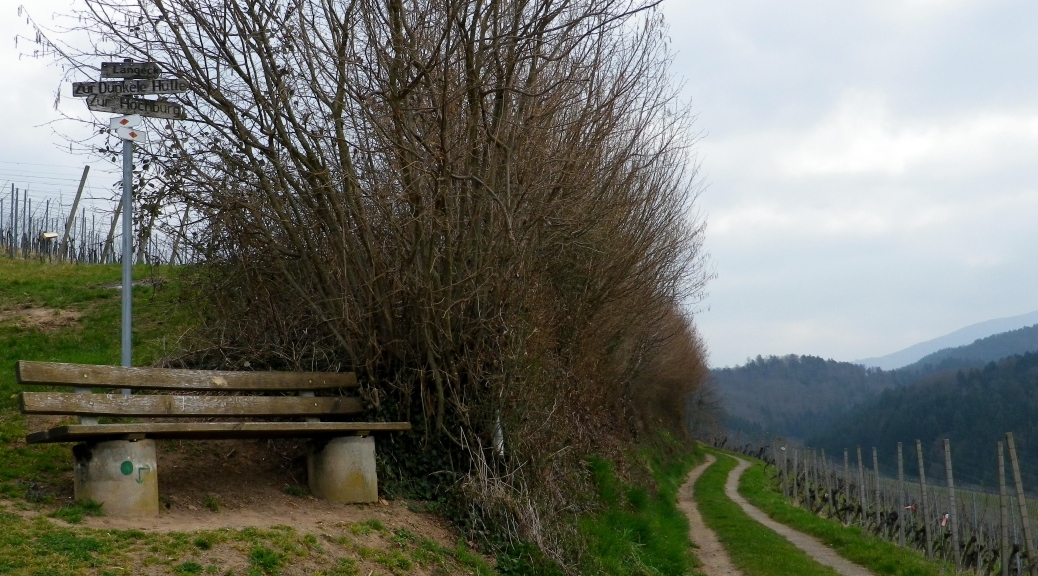I had to laugh at the dog. Just yards from the start of this 99.1 kilometer wine trail (my longest yet), the trail inclined dizzyingly, twisting up and away from Freiburg’s historic old center. Yet a little dog, not much bigger than a cat really, trotted past me, his tiny jacket proclaiming “Yes I can.”
A bit further along this trail, I came across a group of preschoolers on an outing: each one bearing a backpack no less than a third his size. Thus inspired, I thought: I can do this entire trail, in spite of the several challenges it presented.
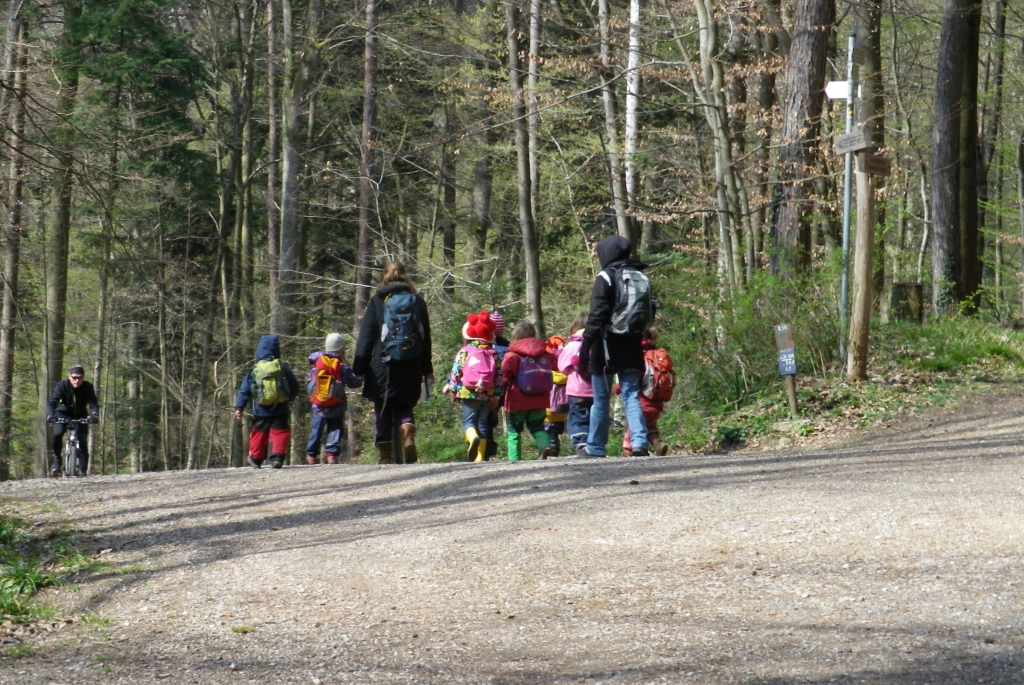
The first challenge was that incline at the official start point of the trail. This would be one of several steep inclines, which while not insurmountable, should give pause to anyone who isn’t reasonably fit. Other memorable climbs were out of Buchholz, Heuweiler, Bombech and Wallburg. Don’t forget though: for every steep incline there is often, of necessity, a steep descent somewhere later. By the end of the first day, I had sorely bruised toes.
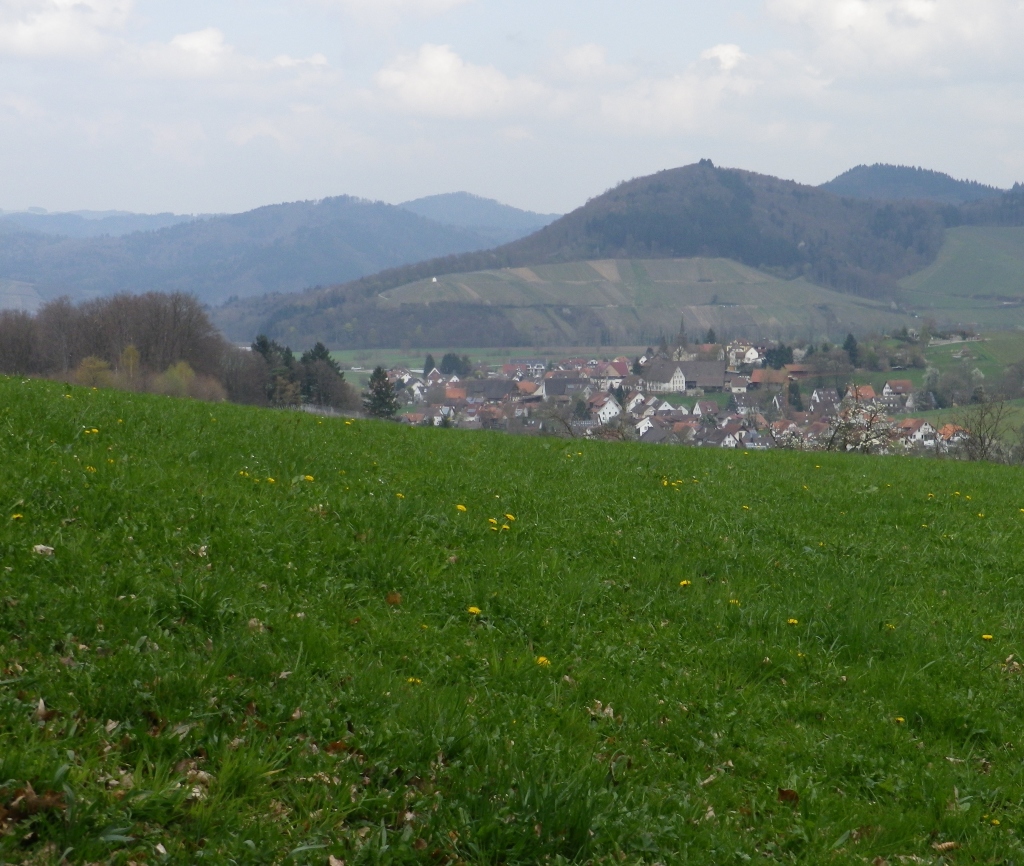
However, hikers can take heart: On a couple of occasions, notably the climb out of Freiburg, the trail widens and levels off, following the ridgeline for quite some distance.
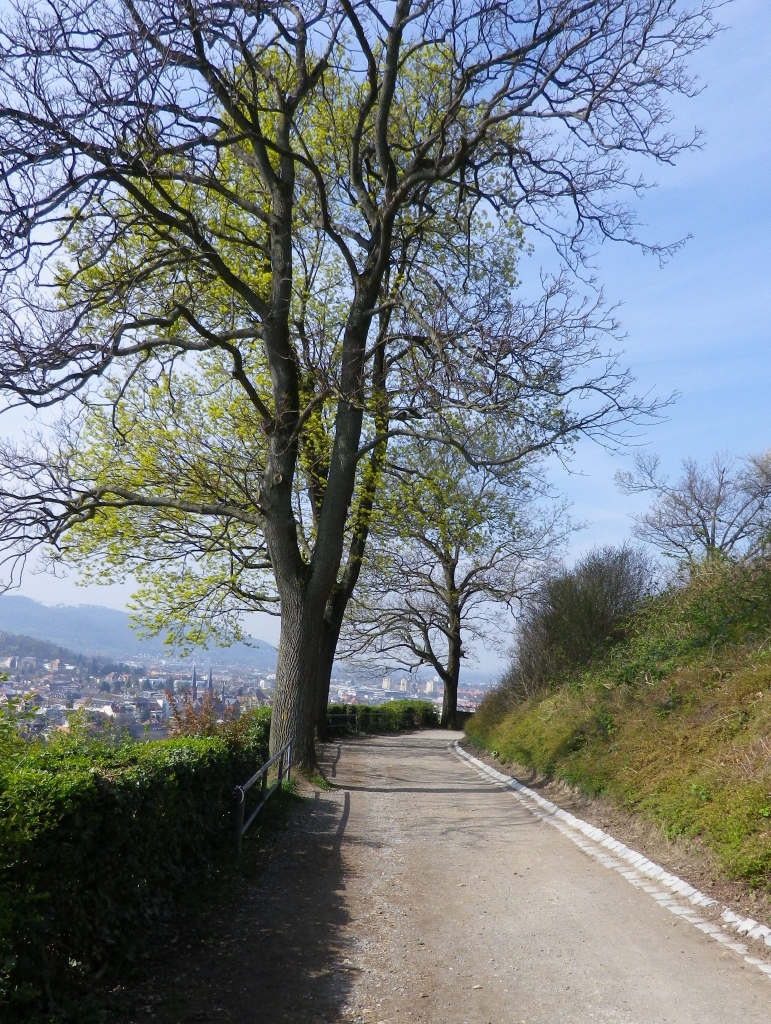
But the inclines were also some of the great highlights of this trail. Once atop the first incline, the city of Freiburg came into view, spread below like a giant urban web – old city, new city, famous landmarks. At the top of the Eichberg stands the highest observation tower in Baden-Wuerttemberg. From a point outside Heimbach, you see the Black Forest extend to its very heights – the mountain tops of the Feldberg, at 1493 meters above sea level, the highest peak in this part of Germany; Schauinsland, a well-known and beloved destination for German tourists; and Belchen, a mystical place for the Celts, and revered today for its fabulous views into Switzerland as well as France. Another observation tower I climbed was the Heubergturm, on the hill outside Herbolzheim. And from the heights of the Hochburg came a memorable view of the ancient volcanic massif of the Kaiserstuhl, rising abruptly from the Rhine plain. Miles long and wide, it ends as dramatically as it begins, and the flat plains of the Rhine continue, until the French Vosges mountains signal their western limit.
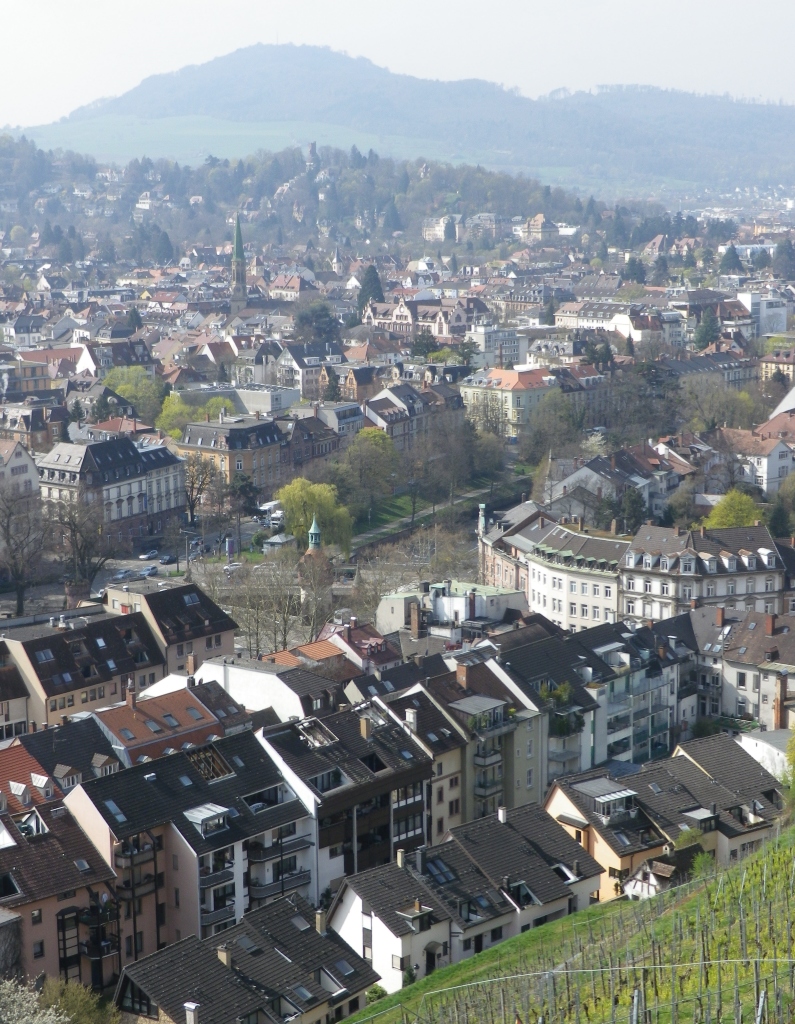
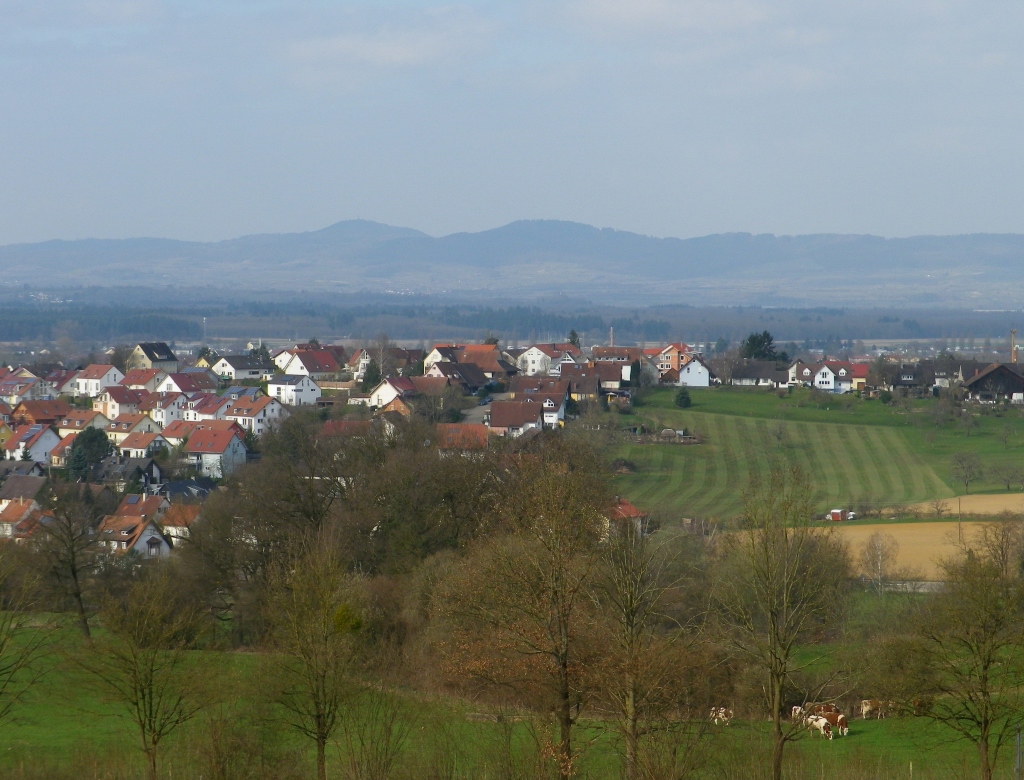
The next challenge was sometimes one of public transportation. The trail passes through some larger towns with excellent public transport. Freiburg, a relaxed and relaxing city with excellent food and wine tasting opportunities, serves as the regional hub for transportation. Therefore it offers extremely convenient bus or train schedules, including light rail service as far as Buchholz. Ettenheim, about 60 kilometers away, is a smaller town, whose historic town center has a lovely collection of baroque architectural pieces, to include its town-hall, church and a small palace, built for the aristocratic French bishops of Strasbourg. The rail station serving Ettenheim lies somewhat inconveniently out in a suburb. Lahr is certainly one of the biggest towns in the area as well. Its train station is about 2 kilometers distant from its attractive historic center. But the city’s well-developed bus routes frequently serve the station.
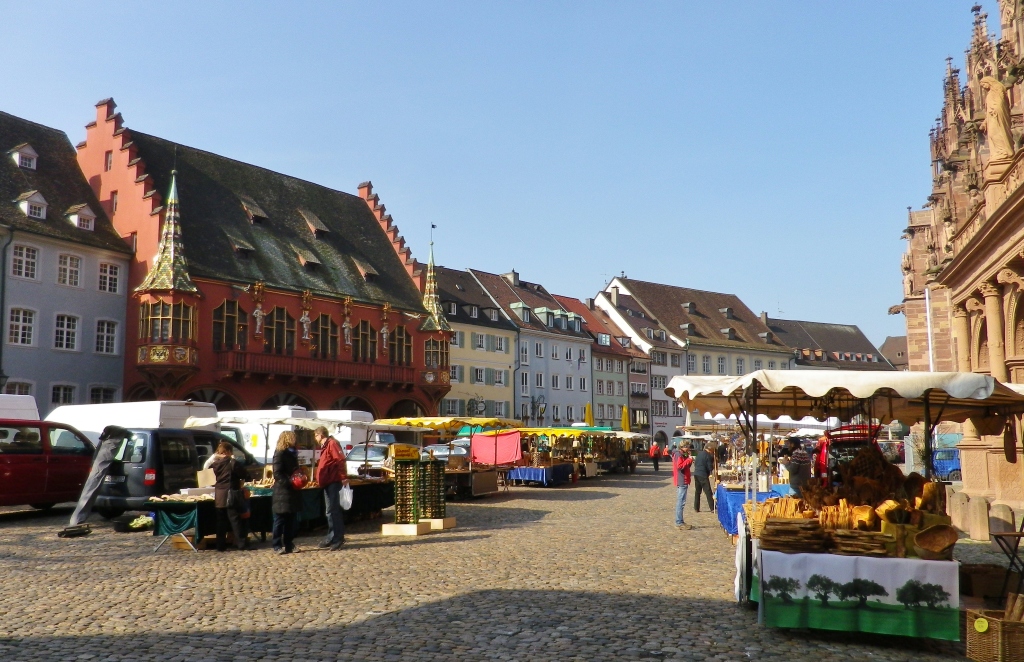
On the other hand, in the hamlets and small villages buses do not run that frequently; or they must be reserved in advance! So while the towns on the plain, set away from the base of the foothills have great rail and bus connections, many of the villages set around the foothills of the Black Forest rely only on occasional buses.
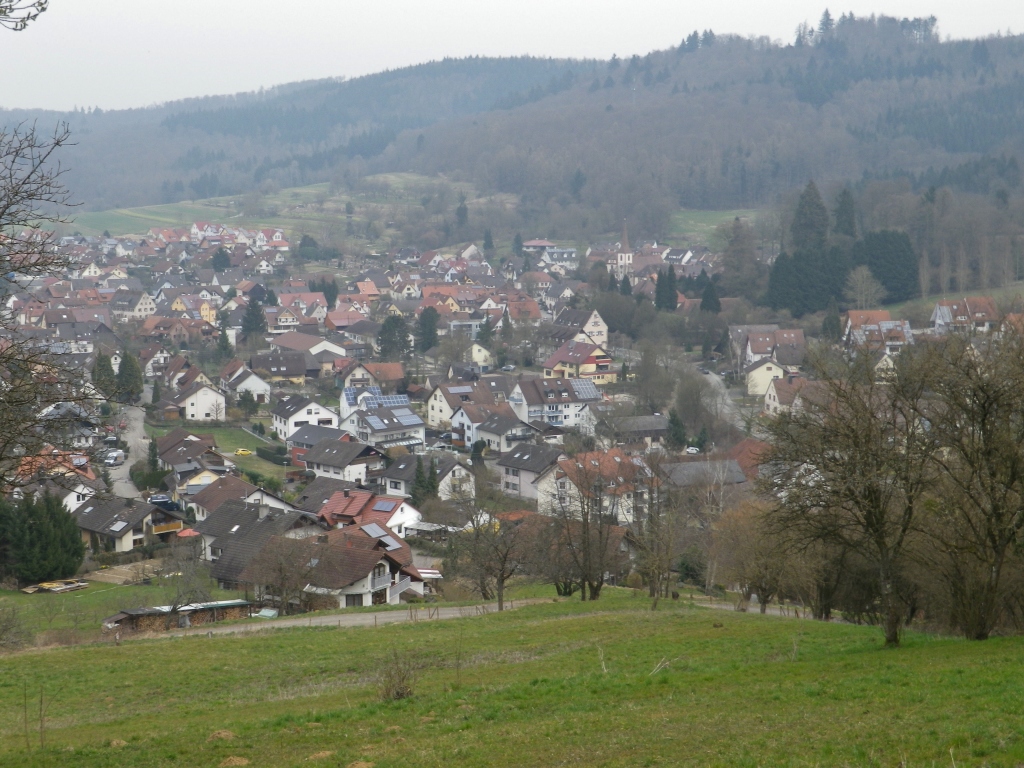
But the villages, almost traffic-less and only lightly-developed, have preserved a sense of timelessness. They were often eerily quiet and definitely off the beaten path. Traditional-looking houses, and some (especially those offering rooms) given a simple, modern facelift, faced onto streets traced narrowly and crookedly onto the landscape centuries ago. Most houses backed onto woods or fields, and more than a few had barns attached or close by. Looking neat and peaceful, they were unpretentious places. Snug Suggental tumbles down a narrow valley tightly lining the sides of its little stream. Diersburg, nestled in a little valley, faces onto its beautifully compact central park. Windenreute, on the other hand, clawed up from its stream to the wooded ridgeline. Charming Schmieheim, with its small palace, red sandstone church, old Jewish cemetery, and surrounding vineyards, was one of my favorites.
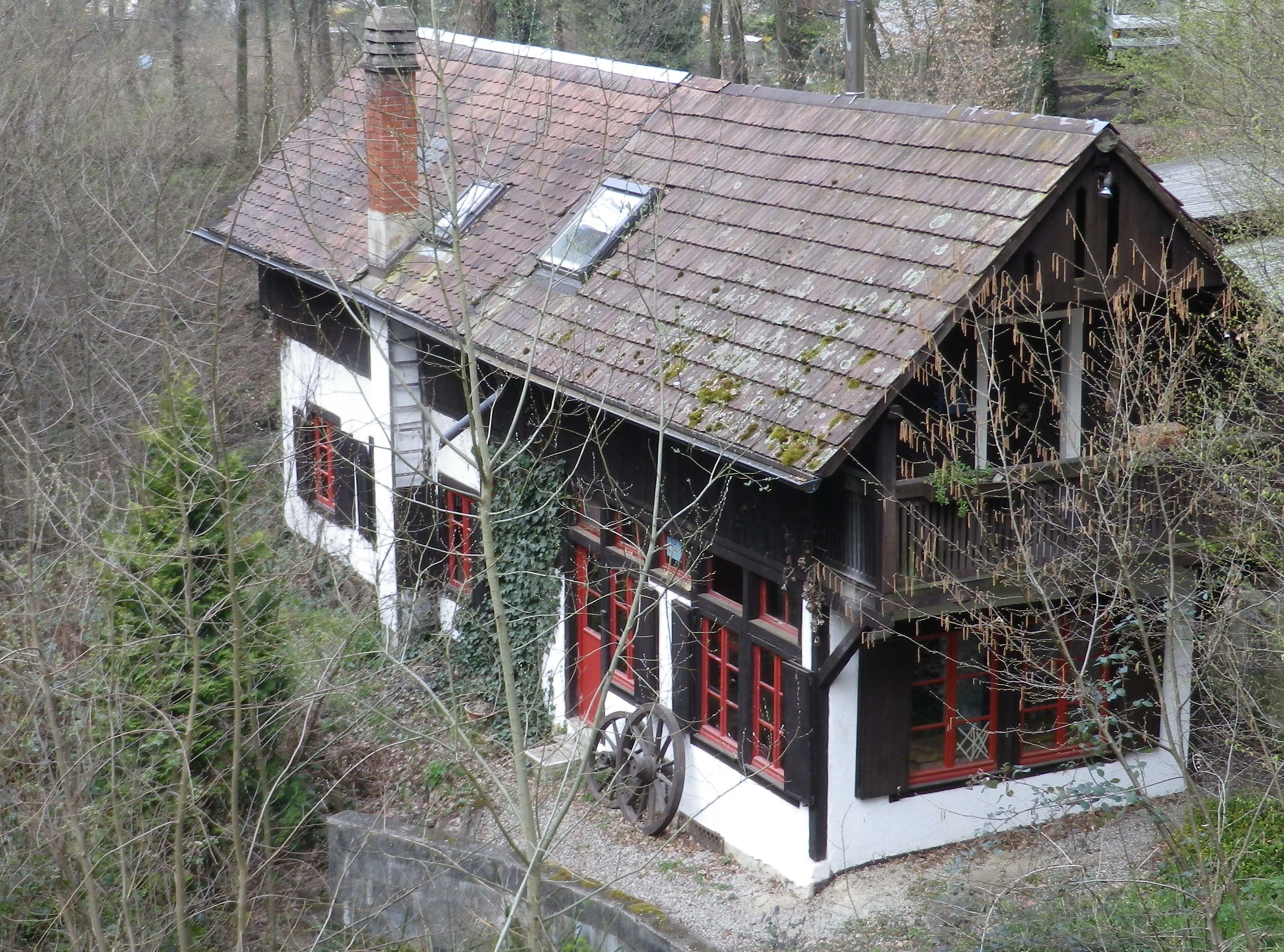
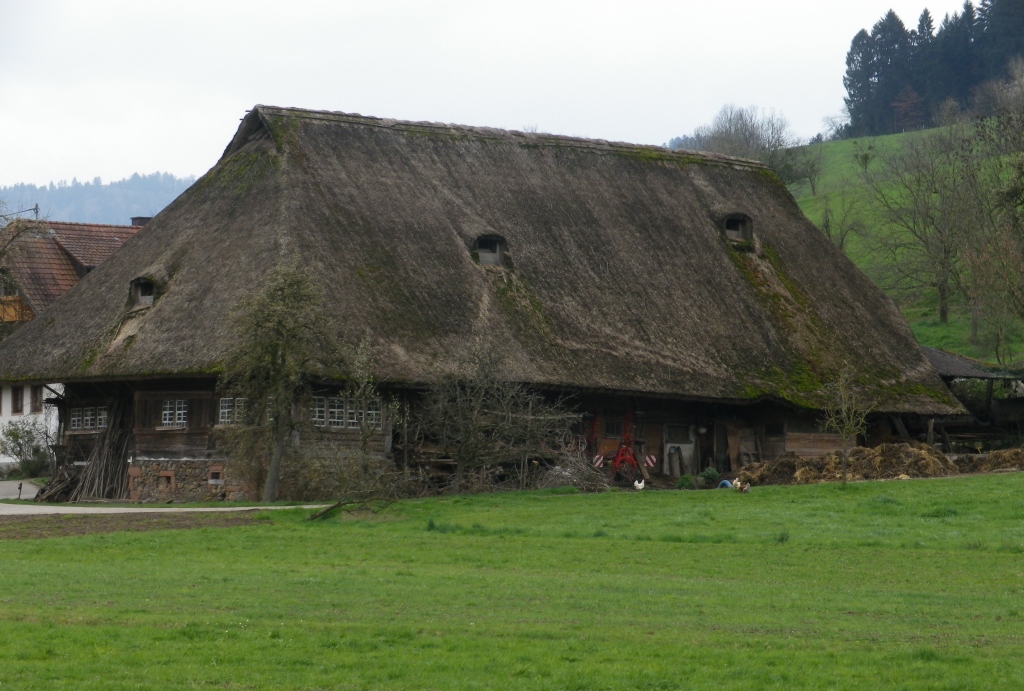
Another challenge was the relative isolation of the trail. This trail meanders through the Black Forest foothills, tranquil dales and outlying woodlands. The isolation, like the inclines, was a two-edged sword. On the one hand, should you need to cut the hike short for any reason, it would require quite some time to get to a village, to find a bus, to get to a train or major city. On the other hand, the isolation means unspoiled countryside to appreciate and admire, to enjoy the sense of remoteness while still possible.
The Black Forest is a fabled area. Its tall, thickly grown fir trees make the forest quite dark in places, hence its name. Walking through a hoary stand of these fir trees was a unique experience. In other places though, the woods were mixed deciduous and fir, meaning warming sunlight pierced the canopy to dapple the forest floor speckled with early spring wildflowers.
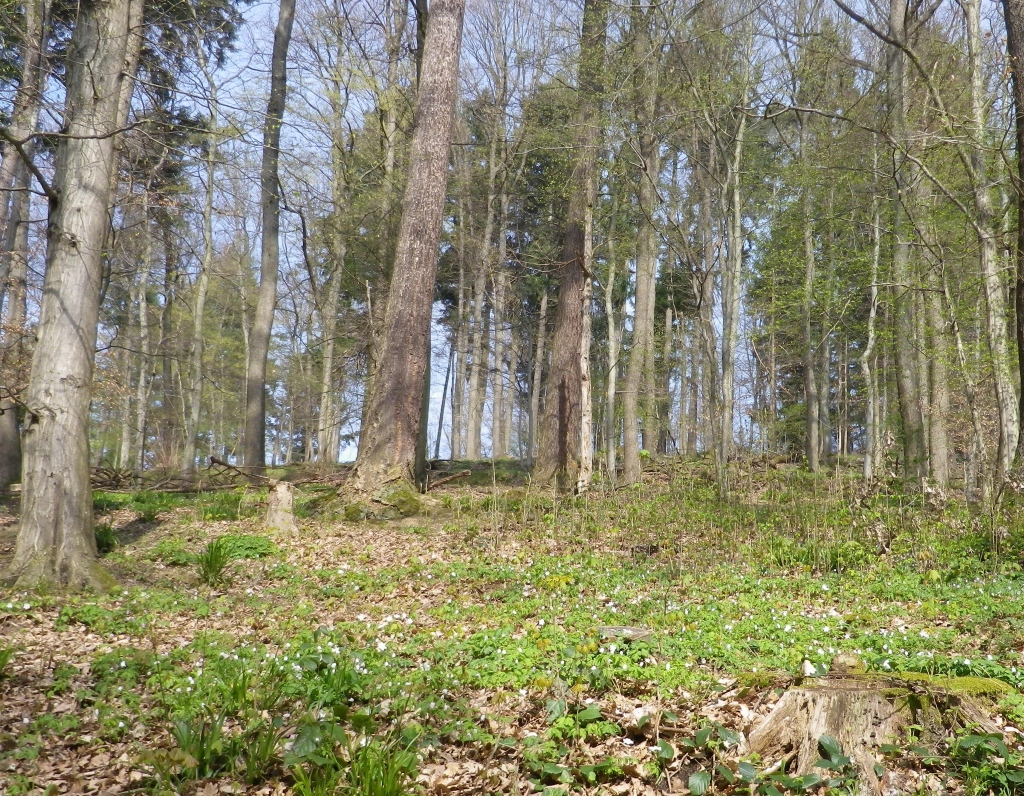
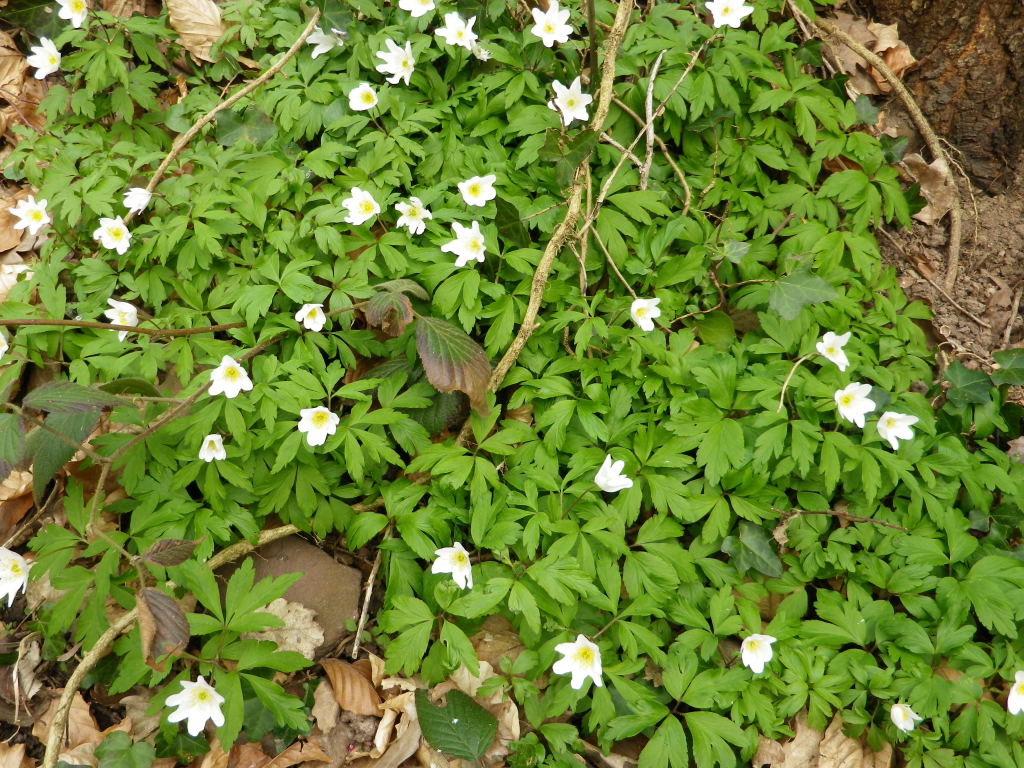
Streams rush down the hills in profusion, bubbling musically. (In addition to countless streams, the trail crosses one of the more important regional rivers, the Elz.) Birds break into song occasionally. What better place to hear a woodpecker? Better yet, I heard a cuckoo – and yes, the famed clocks from the Black Forest accurately reproduce that sound! Finally, nowhere else in Germany have I disturbed a whole herd of large deer. We were all surprised to see each other, and they bounded off; within an instant, the dark tree line swallowed all traces of them, leaving a deep-forest stillness in their wake.
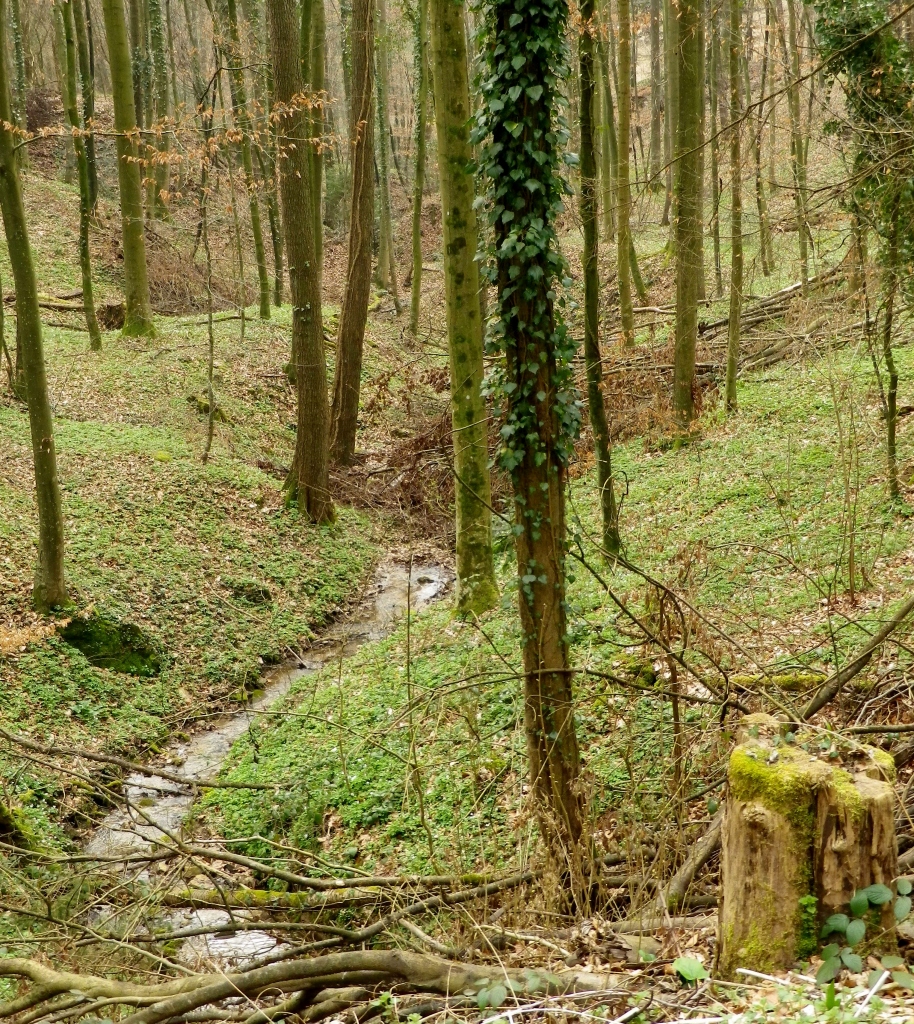
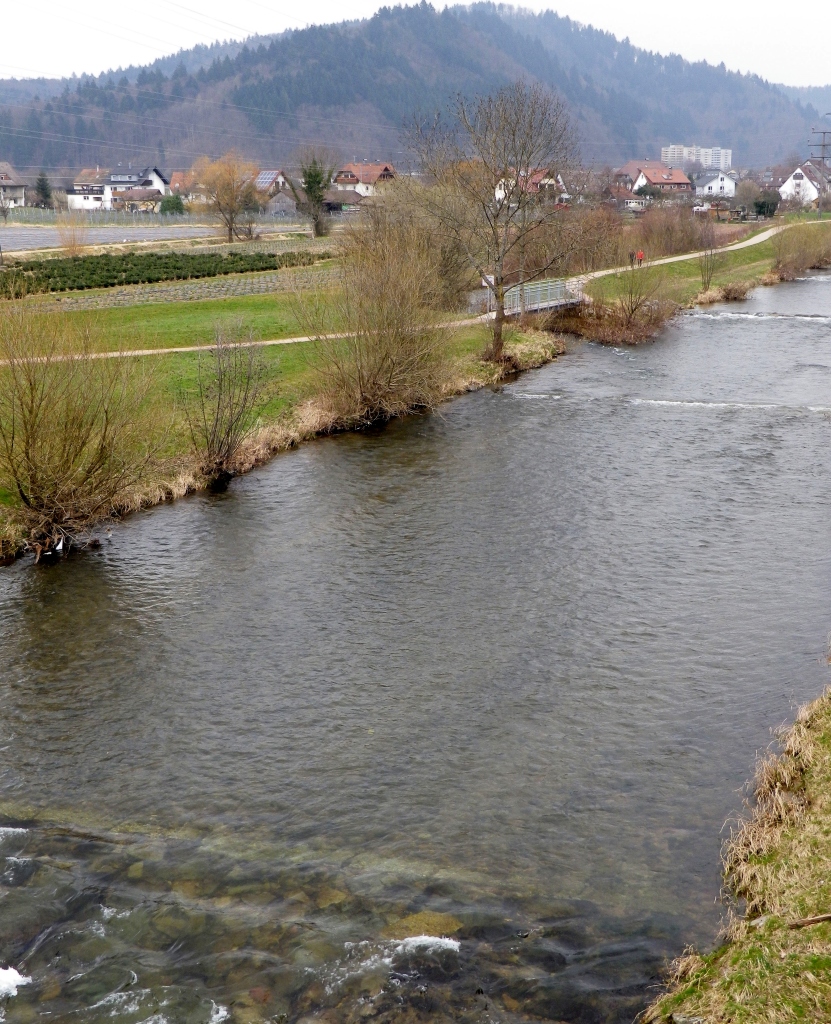
Like a freshly baked apple strudel, the soft comforting scents of pine and damp earth enveloped me. Then too, was a fairly new scent: a carpet of ramps covered the trail on the way to Nordweil from Malterdingen. As I crushed them underfoot, the immediate recall was of my first taste of baerlauch (bear garlic, as they are known in German) in a risotto recently eaten.
When not enjoying forest views, idyllic pastoral scenes would crop up. Horses and cows predominated. Ah, the smells of barnyard life wafting through the cool air as I passed by. But vacant pastures were beginning to show signs of spring: the tiny, early blooming flowers that dot a field with color. One of my favorite places along the trail was the natural bowl formed near the Reichenbaechle. It was a picture-perfect site: dark forest creeping partway down the hills, the vines strung along the south facing slopes, and pasture covering the remaining slopes down to the stream. Others must enjoy it as well: several benches lined the rim of the bowl.
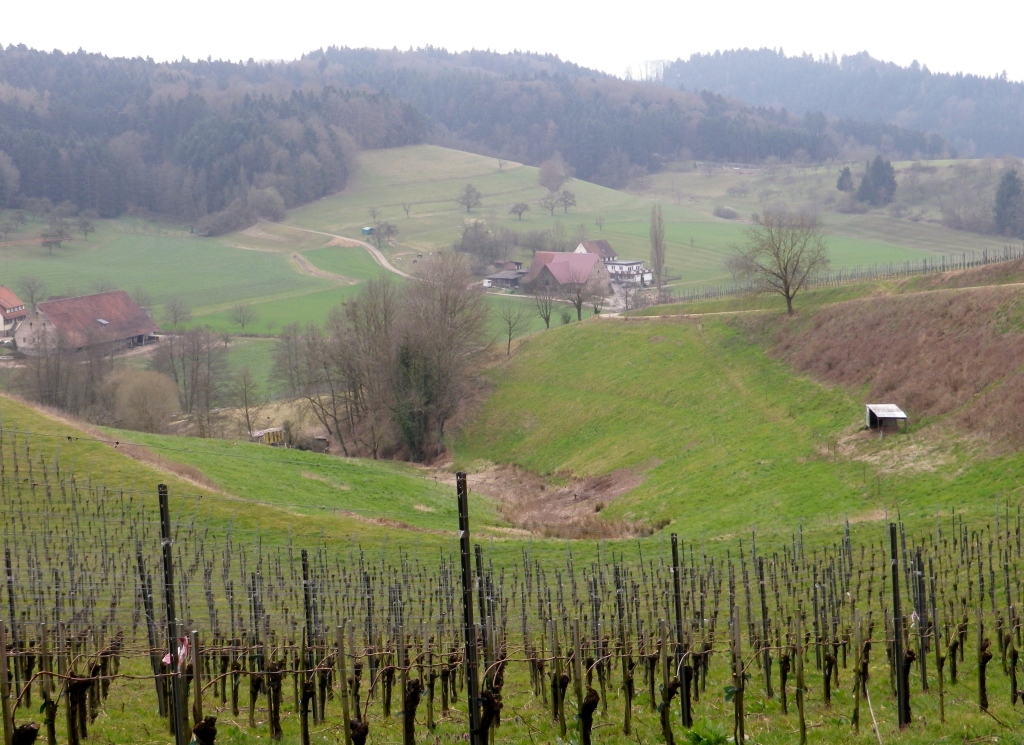
And of course, there are lots of vineyards along this trail. Those around Sexau, Unterglottertal, and Buchholz, and those outside Koendringen, Ettenheim, Mahlberg and Schmieheim were impressive in their width and breadth, some even well-known to wine connoisseurs. But many smaller vineyards, often tucked away in quiet corners, also exist. Because many of the district vineyards are not along main roads, only hikers can appreciate the total extent of vines in this district. However, except in a few villages (notably Buchholz, Mahlberg (next to Schmieheim), and Ettenheim), there weren’t many wineries near the trail. This is because much of the area’s grape harvest goes to large cooperatives set in the plains.
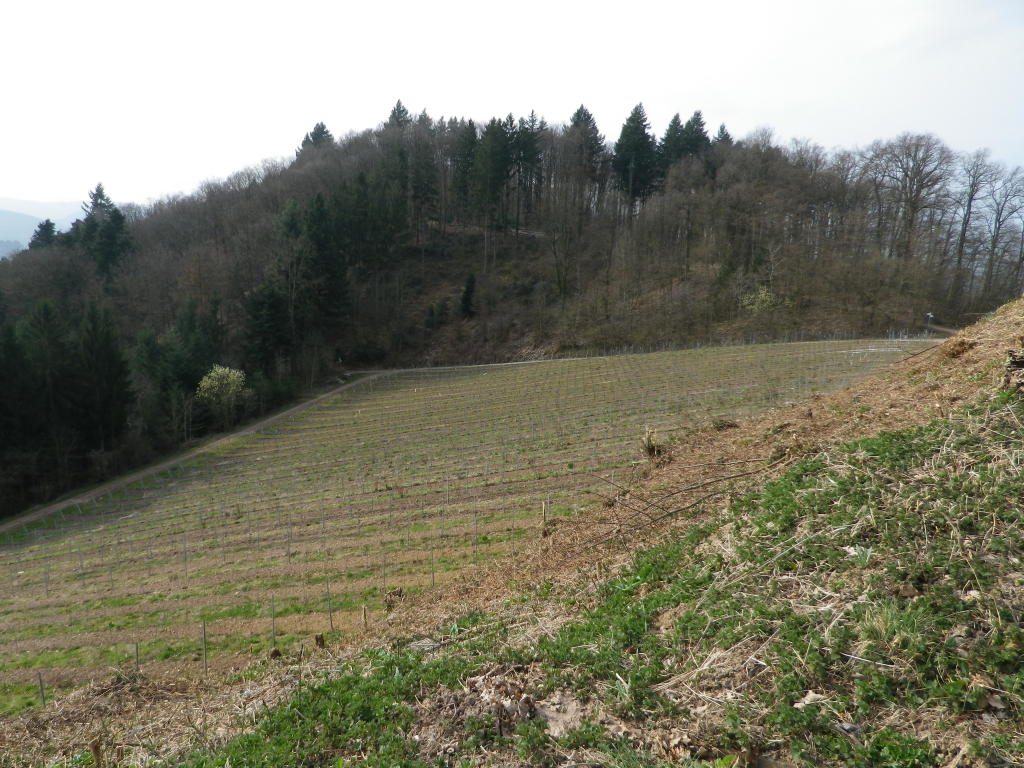
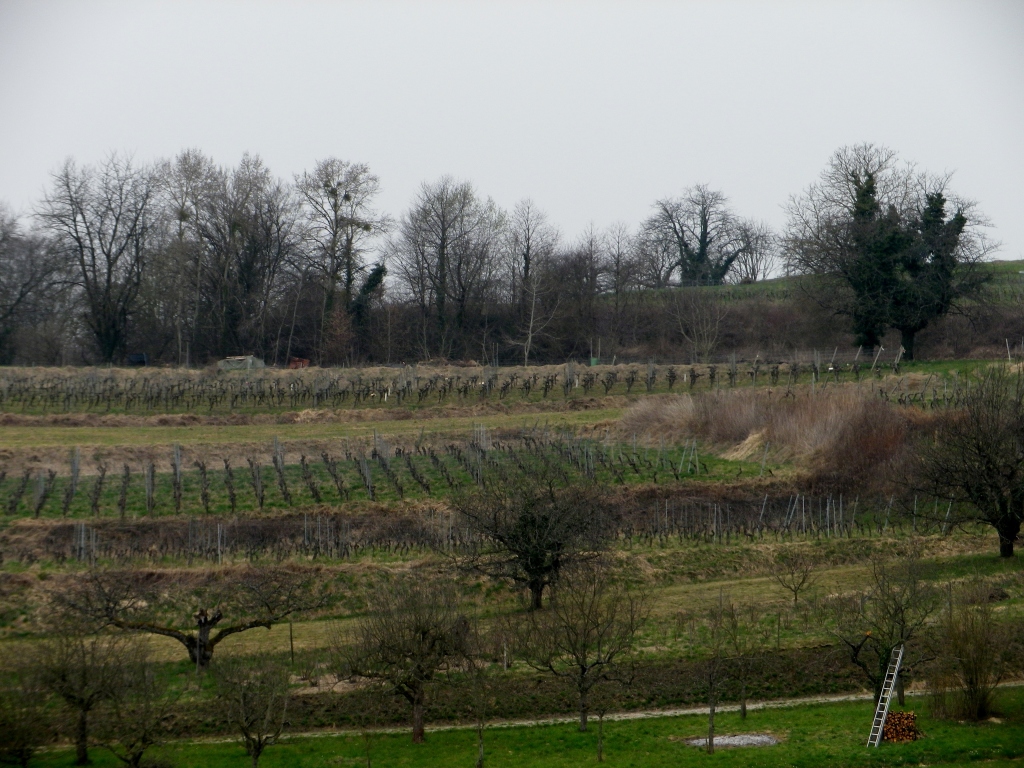
That doesn’t mean there aren’t plenty of opportunities to try the wines made between Freiburg and Diersburg. Several country-style taverns lie right on the trail and offer local wines. These are often manned by farming families. And you should try their wines when here. Perhaps because of its remoteness, or maybe because of the relatively small size of its overall production, Breisgau wine is not easy to find outside this delightful region. So at the end of the trail make sure to raise a final glass of Breisgau wine in a silent toast to this great region and its dedicated vintners.
